Huatulco (Mexico) February 2019
Posted: Mon Mar 04, 2019 10:54 pm
We spent 18 days in Huatulco last month, and I took my camera along in the hope of finding some butterflies. I got 3 days of butterflying, plus there were a couple of other occasions where I got to spend maybe two hours at a time looking around close to where we were staying, just seeing what I could find along the roadsides etc.
It was the peak of the dry season, so whilst I did see quite a few butterflies it was only a tiny fraction of what would have been around at some other times of the year; the Mexican state of Oaxaca has something like 800 species and apparently a lot of them are very plentiful during the wetter seasons. Despite this I did get shots of some iconic species, some of which I'd wanted to see since I was a young lad looking at my butterfly books.
I'll start with the Nymphalidae, which were the most numerous....
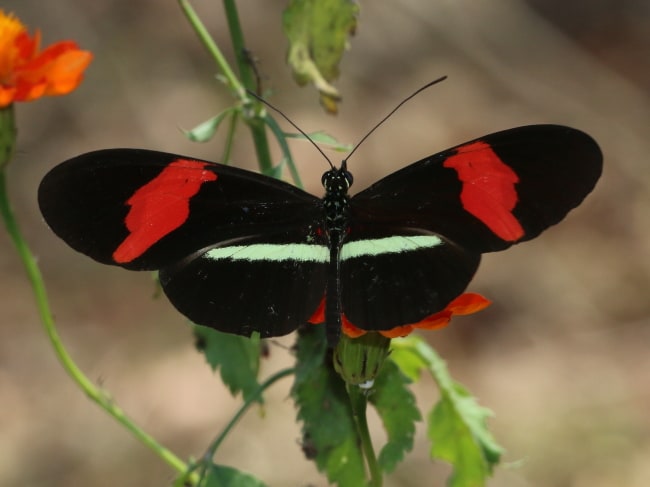
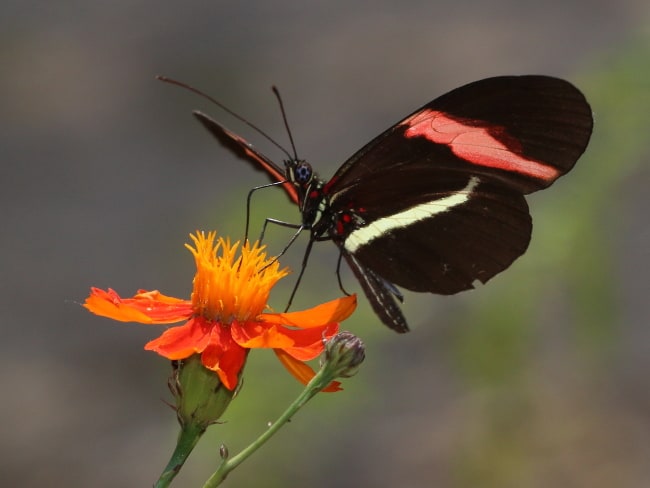
This is the Red Postman (Heliconius erato), which was common especially in areas with a bit of shade. They were quite frustrating to photograph, as typically they'd flutter slowly around just above the ground, looking as if they would settle at any moment but not quite doing so. When they did land they rarely let me get close enough for me to get photos, and usually in such deep shade that a camera capable of taking sharp, non-grainy photos at ISO 1000000 would have been handy. However, they were very attracted to these orange flowers, which helped a lot. These photos were taken in the Huatulco National Park, but the butterfly could show up almost anywhere, including in the garden of the Condos where we were staying (which was also frequented by hummingbirds).
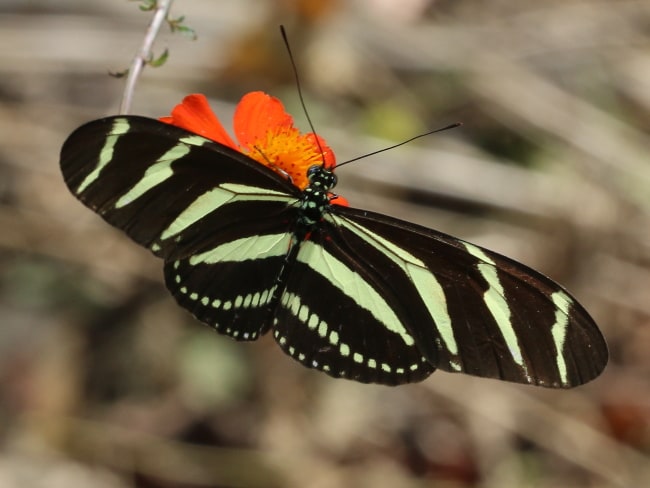
This is the Zebra Heliconian (Heliconius charithonia), photographed on the same clump of flowers as the Red Postman shots. I generally saw those two species in the same places, sometimes in quite large numbers. This one is quite a bit larger than H. erato, which was smaller than I'd expected.
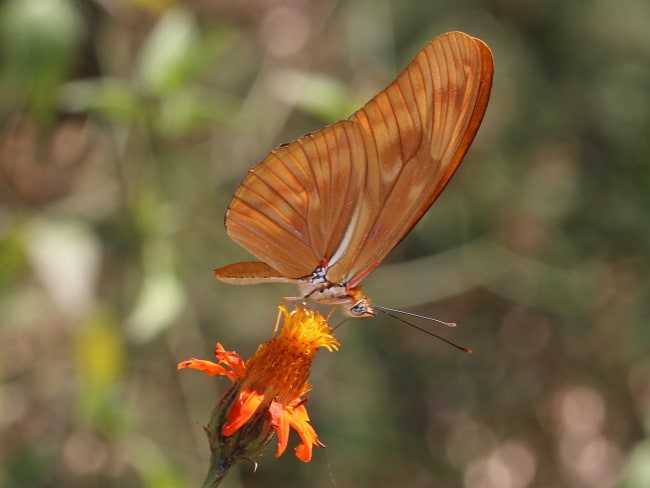
Julia Heliconian (Dryas julia), again photographed at the same flowers. This was also widespread, though it was much more likely to be seen in the sunshine than the previous two species. Whilst it might show up anywhere I didn't see as many of these.
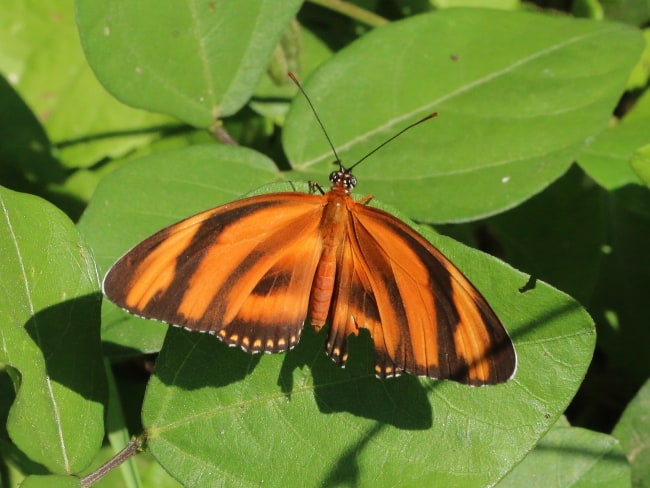
Female Banded Orange Heliconian (Dryadula phaetusa). We had a beach day at Playa La Bocana, but I took my camera backpack along for a couple of hours of butterflying, and attempted to get into the nature reserve that joins onto the beach. That didn't work out too well, as I didn't want to get too close to the river in case it was home to any American Crocodiles, and once I reached the forest I couldn't find any path into the trees. Just before the forest was a waist-high tangle of vines - I didn't fancy fighting through that, and besides there would have been no way to get close to any perched butterfly without disturbing it. So I had to hover around the fringe hoping some butterflies would come within reach; this Heliconian was one of the few that did. The following day I saw the more brightly-coloured male near the pool at our Condo, but wasn't able to get shots of him.

White Morpho (Morpho polyphemus). These things are huge! The first one I saw was soaring around the canopy and it looked quite majestic, though too far away to try to photograph, but the next one was fluttering low down along the track and was hardly any better at flying than I was. I mostly saw them at the National Park - not in great numbers - but the one shown here was in the La Copalita Eco-Archaelogical Park.
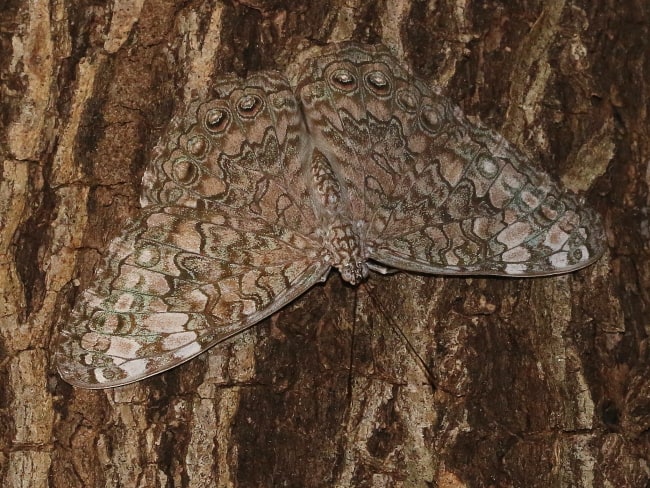
Gray Cracker (Hamadryas februa), at La Copalita. This is also quite a large species; they fly rapidly and eratically - almost manically - then land on tree trunks with the wings spread.
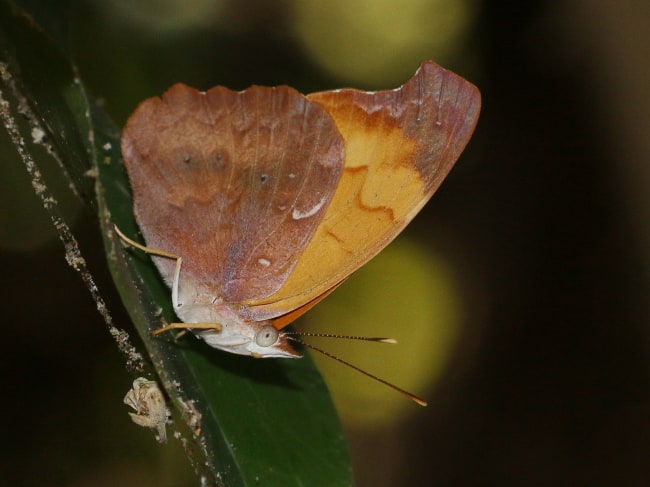
Orange Banner (Temenis laothoe). I only saw one of these, at La Copalita. It stayed in the shade, but would occasionally open its wings to show flashes of the orange upperside.
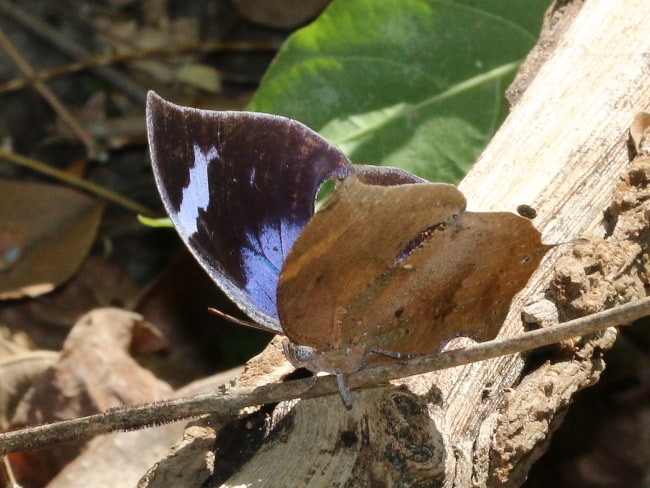
I think this is the Guatemalan Leafwing (Anaea forreri); it doesn't look exactly like the photos I've seen of that species but it looks the closest. I saw a couple of these, one at the side of the road close to where I was staying and the other was at La Copalita (which is the one pictured here).
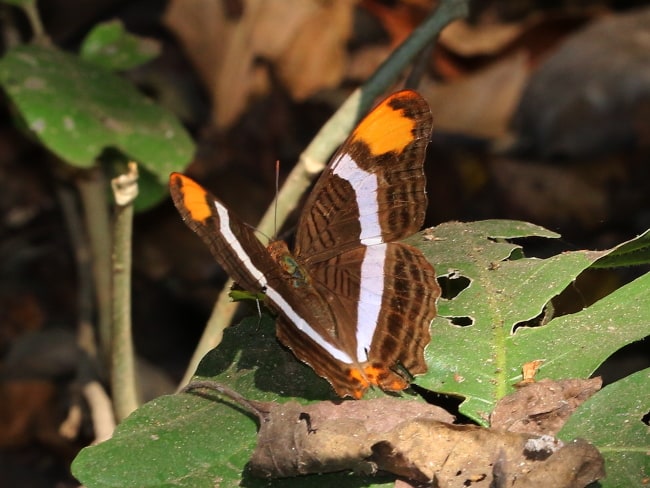
Band-celled Sister (Adelpha fessonia). I *think* I photographed 3 different species of Sister in the Huatulco National Park. None of them was easy to get; they were all wary and reluctant to let me get close.
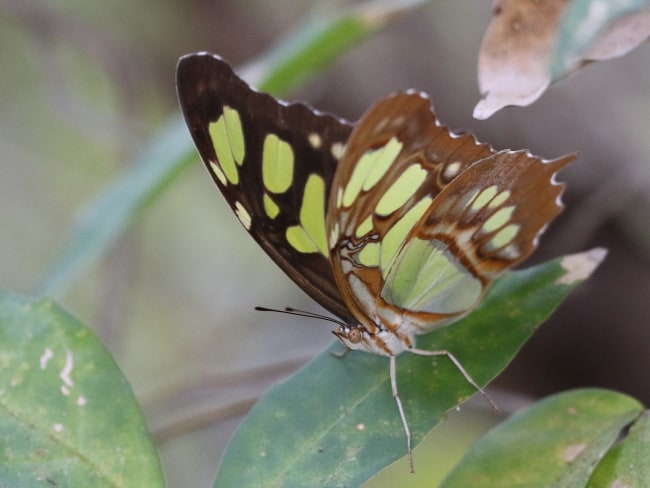
Malachite (Siproeta stelenes). This is quite a large butterfly, and once settled I found it relatively easy to approach for photos, which made a nice change compared to a lot of the Nymphalids. I only saw 3 or 4 of these, all in the National Park.
It was the peak of the dry season, so whilst I did see quite a few butterflies it was only a tiny fraction of what would have been around at some other times of the year; the Mexican state of Oaxaca has something like 800 species and apparently a lot of them are very plentiful during the wetter seasons. Despite this I did get shots of some iconic species, some of which I'd wanted to see since I was a young lad looking at my butterfly books.
I'll start with the Nymphalidae, which were the most numerous....
This is the Red Postman (Heliconius erato), which was common especially in areas with a bit of shade. They were quite frustrating to photograph, as typically they'd flutter slowly around just above the ground, looking as if they would settle at any moment but not quite doing so. When they did land they rarely let me get close enough for me to get photos, and usually in such deep shade that a camera capable of taking sharp, non-grainy photos at ISO 1000000 would have been handy. However, they were very attracted to these orange flowers, which helped a lot. These photos were taken in the Huatulco National Park, but the butterfly could show up almost anywhere, including in the garden of the Condos where we were staying (which was also frequented by hummingbirds).
This is the Zebra Heliconian (Heliconius charithonia), photographed on the same clump of flowers as the Red Postman shots. I generally saw those two species in the same places, sometimes in quite large numbers. This one is quite a bit larger than H. erato, which was smaller than I'd expected.
Julia Heliconian (Dryas julia), again photographed at the same flowers. This was also widespread, though it was much more likely to be seen in the sunshine than the previous two species. Whilst it might show up anywhere I didn't see as many of these.
Female Banded Orange Heliconian (Dryadula phaetusa). We had a beach day at Playa La Bocana, but I took my camera backpack along for a couple of hours of butterflying, and attempted to get into the nature reserve that joins onto the beach. That didn't work out too well, as I didn't want to get too close to the river in case it was home to any American Crocodiles, and once I reached the forest I couldn't find any path into the trees. Just before the forest was a waist-high tangle of vines - I didn't fancy fighting through that, and besides there would have been no way to get close to any perched butterfly without disturbing it. So I had to hover around the fringe hoping some butterflies would come within reach; this Heliconian was one of the few that did. The following day I saw the more brightly-coloured male near the pool at our Condo, but wasn't able to get shots of him.
White Morpho (Morpho polyphemus). These things are huge! The first one I saw was soaring around the canopy and it looked quite majestic, though too far away to try to photograph, but the next one was fluttering low down along the track and was hardly any better at flying than I was. I mostly saw them at the National Park - not in great numbers - but the one shown here was in the La Copalita Eco-Archaelogical Park.
Gray Cracker (Hamadryas februa), at La Copalita. This is also quite a large species; they fly rapidly and eratically - almost manically - then land on tree trunks with the wings spread.
Orange Banner (Temenis laothoe). I only saw one of these, at La Copalita. It stayed in the shade, but would occasionally open its wings to show flashes of the orange upperside.
I think this is the Guatemalan Leafwing (Anaea forreri); it doesn't look exactly like the photos I've seen of that species but it looks the closest. I saw a couple of these, one at the side of the road close to where I was staying and the other was at La Copalita (which is the one pictured here).
Band-celled Sister (Adelpha fessonia). I *think* I photographed 3 different species of Sister in the Huatulco National Park. None of them was easy to get; they were all wary and reluctant to let me get close.
Malachite (Siproeta stelenes). This is quite a large butterfly, and once settled I found it relatively easy to approach for photos, which made a nice change compared to a lot of the Nymphalids. I only saw 3 or 4 of these, all in the National Park.